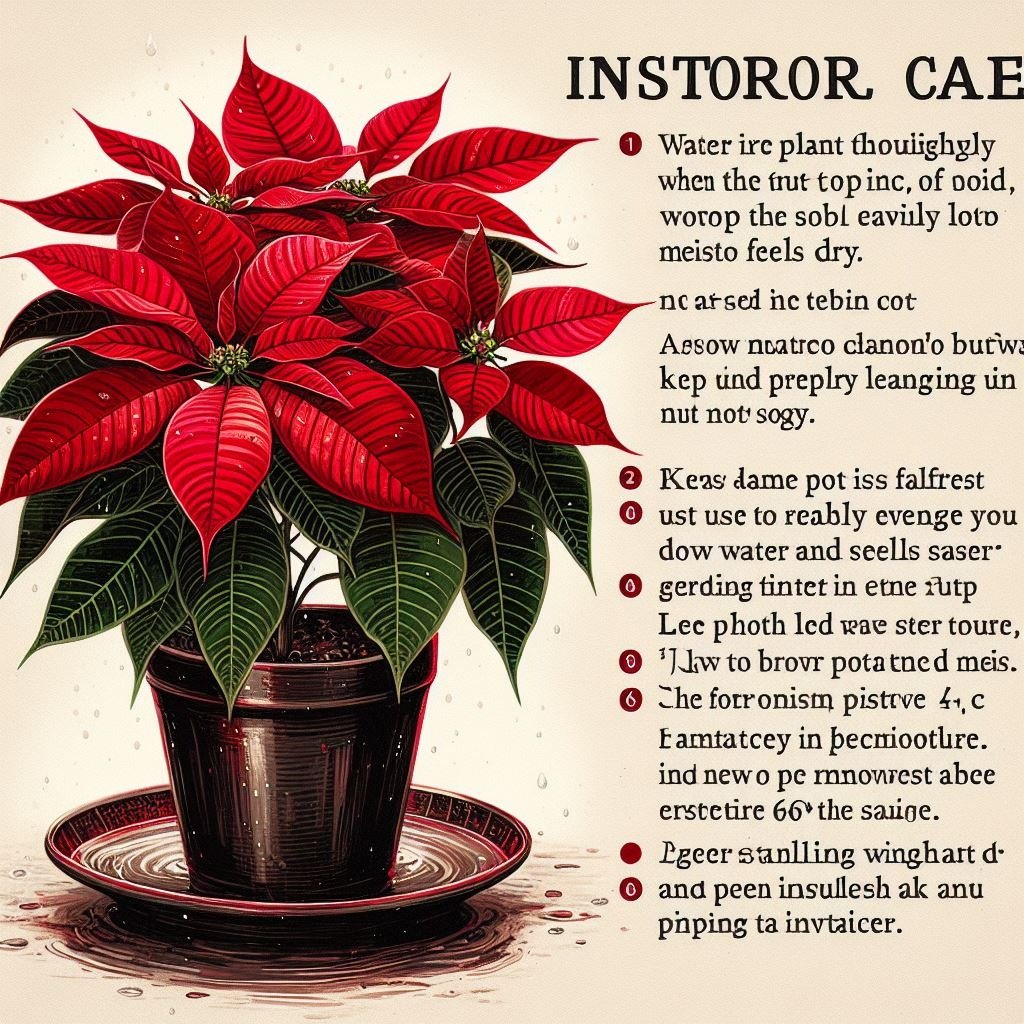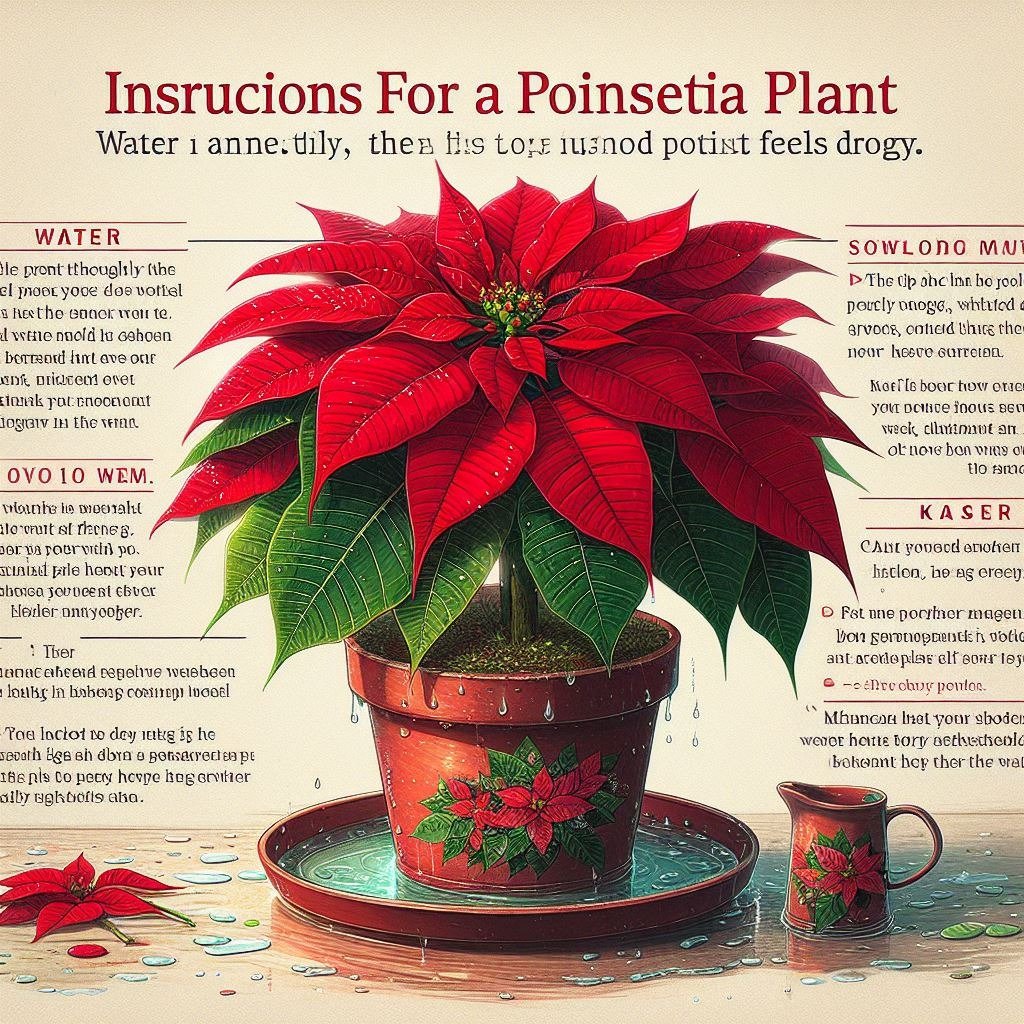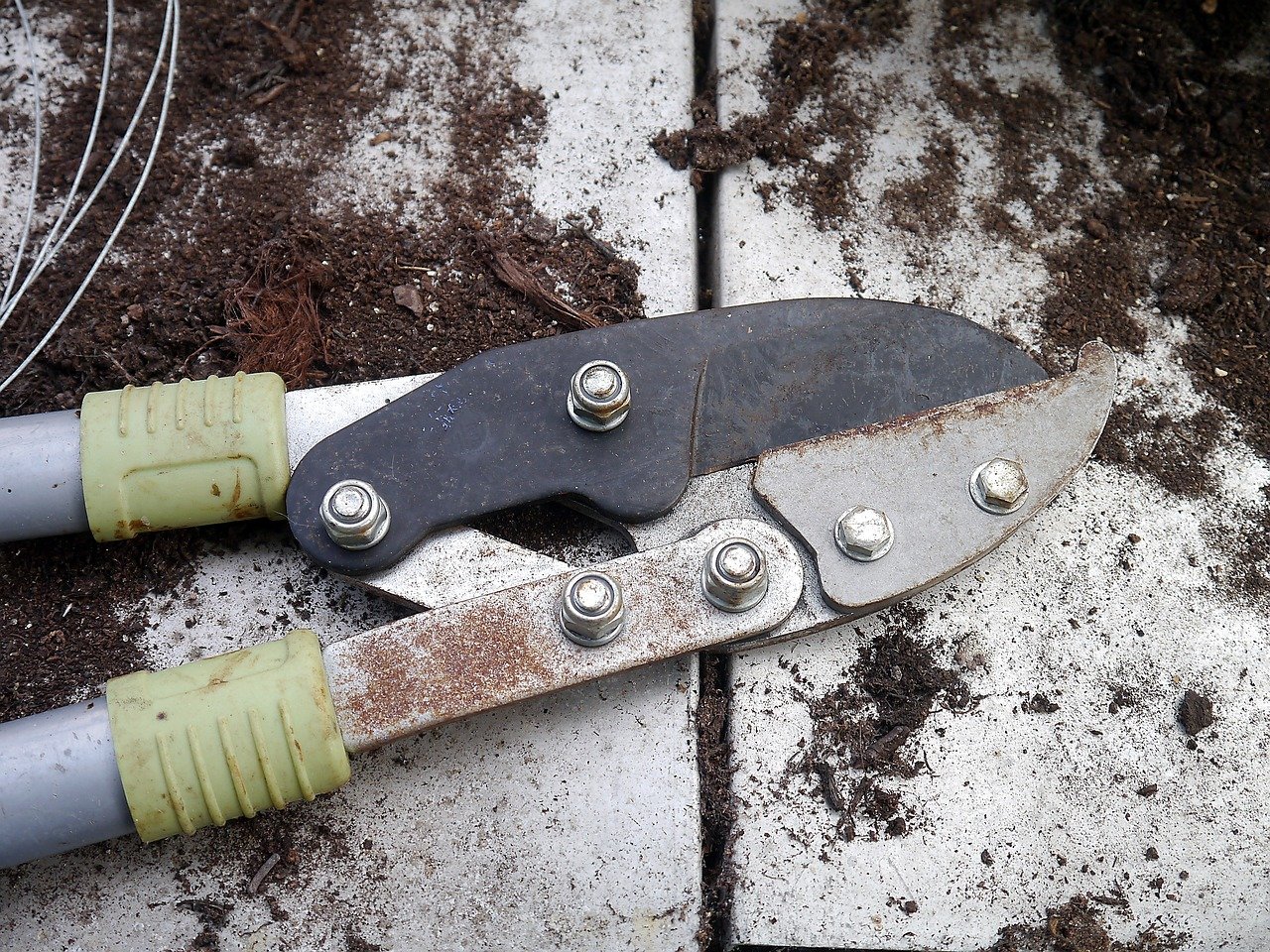
Timing is everything. When to plant strawberries for a great harvesting season is what you should worry about
When to plant strawberries In this book called “The Plot Hero’s Guide,” you are going to learn about the strategic

Poinsettias are a familiar festive plant of the Christmas season and are usually merriment that people add to the doorways and platforms of their homes during the winter months. This piece will cover both water schedule advice for poinsettias and watering problems, as well as pointers on how water is needed due to noticing signs or if you don’t replenish water enough. Ultimately, you will know exactly how much water the indoor poinsettia needs to keep it alive and beautiful during the holiday seasons of the year.
Regarding the watering of your poinsettia plants, the general rule you can use is to water only as soon as the top inch or two of the soil is dry when you touch it. Usually, that happens by watering the poinsettia plant indoors once every 5–7 days.
Warmer interior temperatures will result in the soil drying out faster. To meet this challenge, this will require more watering regularly than usual. As opposed to the hotter seasons, when the soil dries quickly after a few days, cooler temperatures will allow it to remain moist for longer periods during watering.
Placing poinsettias in sunny spots will significantly increase water consumption due to the removal of the cover and the light and airflow, which consequently accelerates soil drying.
During the winter months, when it is time to keep temperatures at room temperature, the striped petal general rule should be to water a poinsettia plant every 5-7 days. In warm spring and summer, you’re going to irrigate it every 3-5 days to hold on to the soil moisture, which is almost the same but not soaked.
Lift the pot to feel the weight. Giving options is another aspect of interactive instruction, which allows learners to make choices and explore different solutions. If the pot appears to be very lightweight, the topsoil is probably dry, which means that it should be watered.
Stick your finger into the soil as far as that one knuckle. If the soil texture becomes hard and crumbly, it may be time to water the poinsettia plant again.
A hint of yellow, brown, or fallen-off leaves early on in the leaf distillation could mean the saplings are thirsty. It is also recommended to check your poinsettia for water every two or three days, especially during the summer’s peak of heat or in the wintertime when the air tends to be very dry.
The best way to water the poinsettia is to let it gradually moisten itself in the morning since the poinsettia absorbs moisture during the day but not during the night. Because the restaurant already has a watering system during the night, it may be susceptible to standing water, which increases the risk of fungal diseases.
The poinsettia shrinker can suffer from either overwatering or underwatering of the plant. Here are some of the key symptoms to watch out for:
If you begin to see some of these symptoms, please modify the watering schedule accordingly. Use our artificial intelligence to write for you for free as many times as you want. Cut down on watering frequency if you get the overwatering symptoms, but step it up if the plant shows you signs of underwatering.
How Often Should You Water a Poinsettia Plant Indoors? It is important to note that poinsettia is one kind of indoor plant. Therefore, watering it properly is important for its health and longevity. In a nutshell, poinsettia watering frequency is to wait till the top inch or two of the soil is dried and then give it enough water to ensure it is moist but not soaking, as that would lead to root rot. Too, variations in the pot sizes, temperature, or sun radiation will play a part in the advancing watering frequency.

When watering a poinsettia, use tepid water and make sure that the leaf basis, fiber, and firmness remain dry.By having an appropriate watering schedule and just loving it, you can be assured of the vibrant hues of the plants in your apartment throughout the season and beyond. When you learn to water your poinsettia in your home at the right frequency, you will have covered the importance of keeping this cheerful plant in good condition.
Usually, to water a poinsettia indoors within the winter season, every 5-7 days is required, but in the spring and summer, watering every 3-5 days can be good. Either frequency will depend on a particular pot size, temperature, and light exposure.
When you water, use lukewarm water and pour it carefully, in small doses, onto the pot until water starts draining out through the pot’s bottom part. Water only the spots with no leaves on. Set aside 30 minutes and get rid of any excess water that gathers in the saucer or planter compartment.

When to plant strawberries In this book called “The Plot Hero’s Guide,” you are going to learn about the strategic

Best Pruner Anyone who enjoys maintaining a lovely garden knows you should choose the best pruners. Pruners are some of